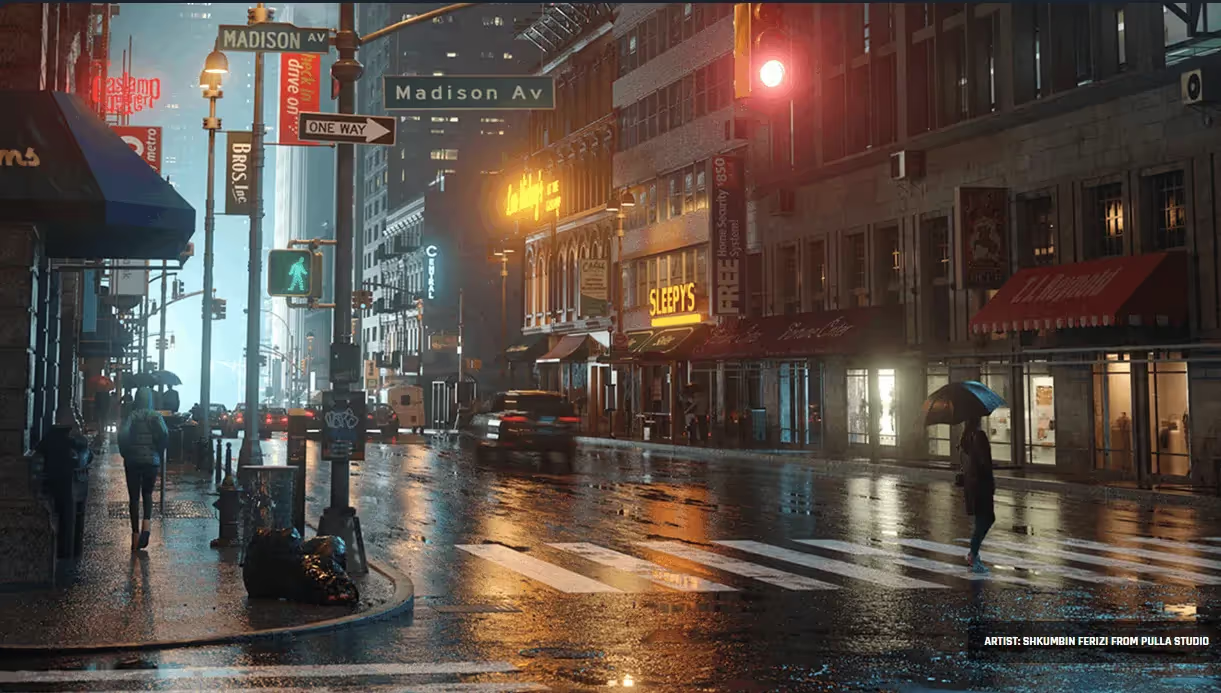.avif)
In the expansive market of 3D rendering, Redshift has made a significant impact with its unique and powerful features, carving out a distinct space for itself among popular render engines. It's a GPU-accelerated, biased renderer tailored to provide exceptional performance while maintaining impressive precision and quality. Designed with a balance of power and simplicity in mind, Redshift is known for its accelerated rendering capabilities that don't compromise on detail, making it a choice worth considering for every 3D artist.
All things considered, Redshift is a powerful and adaptable rendering engine that delivers a unique combination of speed, accuracy, and flexibility, promising to streamline your workflow and elevate your creative output. Whether you're a hobbyist or a professional, Redshift offers an invaluable toolkit for any artist seeking to render high-quality images quickly and easily. Come along as we dive deeper into the realm of Redshift, discovering its characteristics, advantages, and what lies ahead.

Redshift's approach to rendering aims to tackle the primary challenges faced by artists in the industry today: time and quality. Its key feature, GPU acceleration, has revolutionized the rendering process, significantly reducing the time to produce high-quality images. But speed isn't all Redshift has to offer. It combines a blend of fast render times and accuracy, a balancing act achieved through its biased rendering system.
Even though a biased renderer typically sacrifices some accuracy for enhanced speed, Redshift upholds a high degree of realism. It employs a series of intelligent techniques designed to optimize performance without noticeably impacting the visual output. These smart compromises make Redshift an extraordinary tool, providing users with the means to achieve stunningly realistic results in a fraction of the time.
Alongside its rapid rendering and high accuracy, Redshift's adaptability across various projects sets it apart from the crowd. Whether it's a high-impact VFX shot for a blockbuster movie, a captivating architectural visualization, or a sleek product design, Redshift can handle it all. For beginners venturing into the world of rendering, or for seasoned professionals seeking a more efficient workflow, Redshift is user-friendly and relatively easy to grasp. This ease of use, combined with its seamless integration with various popular 3D applications, positions Redshift as an accessible and versatile rendering solution.

Redshift is lauded as one of the fastest render engines out there, thanks to its GPU acceleration, which significantly reduces render times. This allows for more focus on the creative process and less on waiting for renders. As mentioned earlier, despite being a biased renderer — a characteristic that traditionally sacrifices some accuracy for speed — Redshift still offers high accuracy and stunningly realistic results.
Redshift's versatility is another compelling feature. It works well with various styles, and supports an extensive range of capabilities, including physically-based shading, GPU-optimized volumetrics, and motion blur.
For those new to rendering, Redshift offers a clean and intuitive interface. It comes with comprehensive documentation and tutorials that ease the learning process. Even better, Redshift offers a free trial, allowing you to explore its features before committing.
A critical aspect of any software is its ability to integrate smoothly with other applications. Redshift does this seamlessly, integrating with popular 3D applications such as Autodesk Maya, Autodesk 3ds Max, Blender, Cinema 4D, Foundry Katana, and SideFX Houdini. You can use Redshift with your favorite 3D application without learning new software.
When it comes to working with online render farm services, Redshift is widely regarded as a highly compatible and reliable option. This is because Redshift is designed to work seamlessly with a variety of different GPU-powered online rendering services like our Redshift render farm.

The latest Flakes shader is an excellent tool for producing an array of visual effects, ranging from glossy metallic finishes on vehicles to sparkly superballs. This three-dimensional shader creates flakes in the form of either voronoi or dots, which are placed at random angles and depths on the surface to enhance the realism and brilliance of your renders. It is now accessible in all supported Digital Content Creation (DCC) software.
To sum everything up, Redshift stands out as a tool that can empower artists to bring their visions to life efficiently and highly realistically. Its unique blend of speed, accuracy, and versatility makes it an ideal choice for a broad spectrum of 3D artists. However, it particularly shines for those in dynamic environments like animation and VFX production, where quick iteration and turnaround times are essential.
Also, architectural visualizers and product designers who aim to attain photorealistic renders while working on strict timelines will find Redshift to be a game-changer. Its forthcoming enhancements promise to make it even more of a powerhouse in the rendering landscape. No matter what your 3D aspirations might be, Redshift provides the tools and capabilities to create, innovate, and astound.